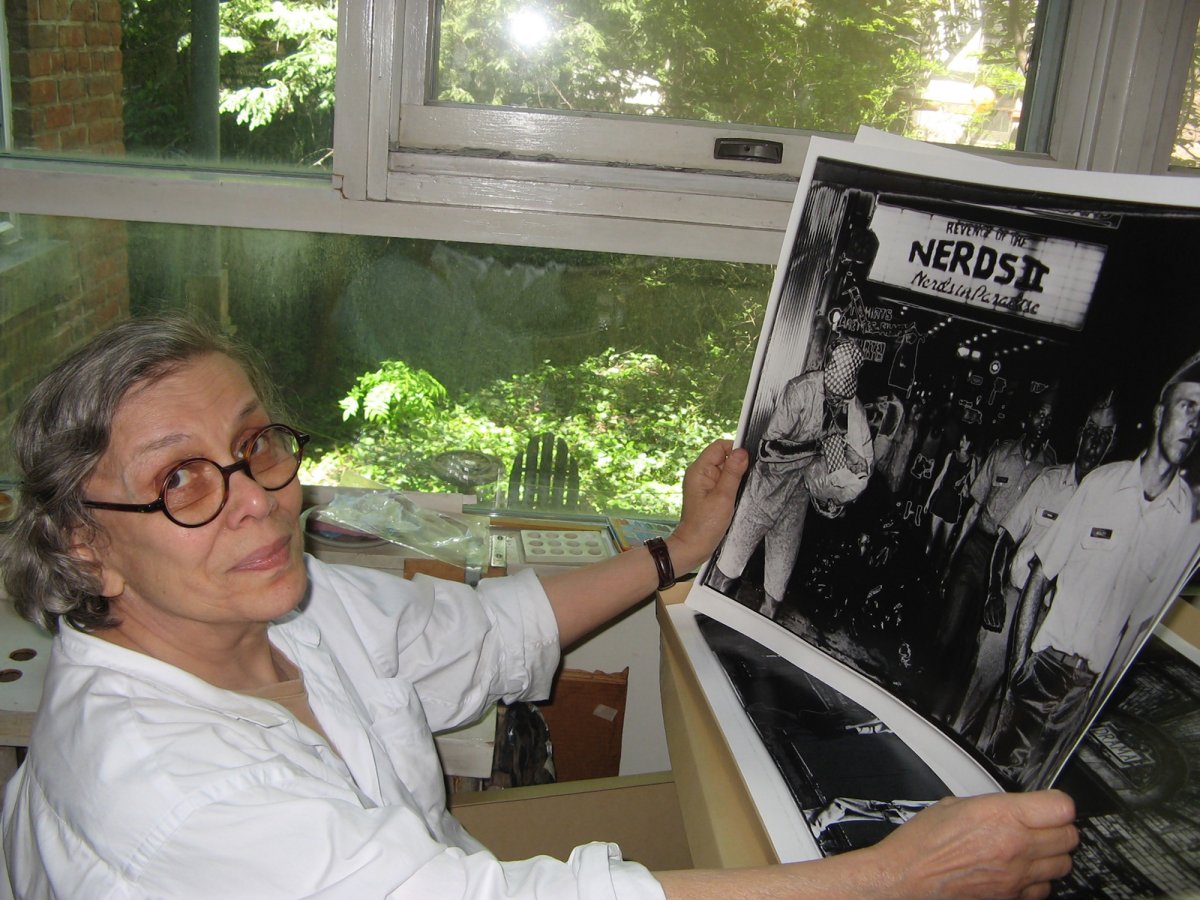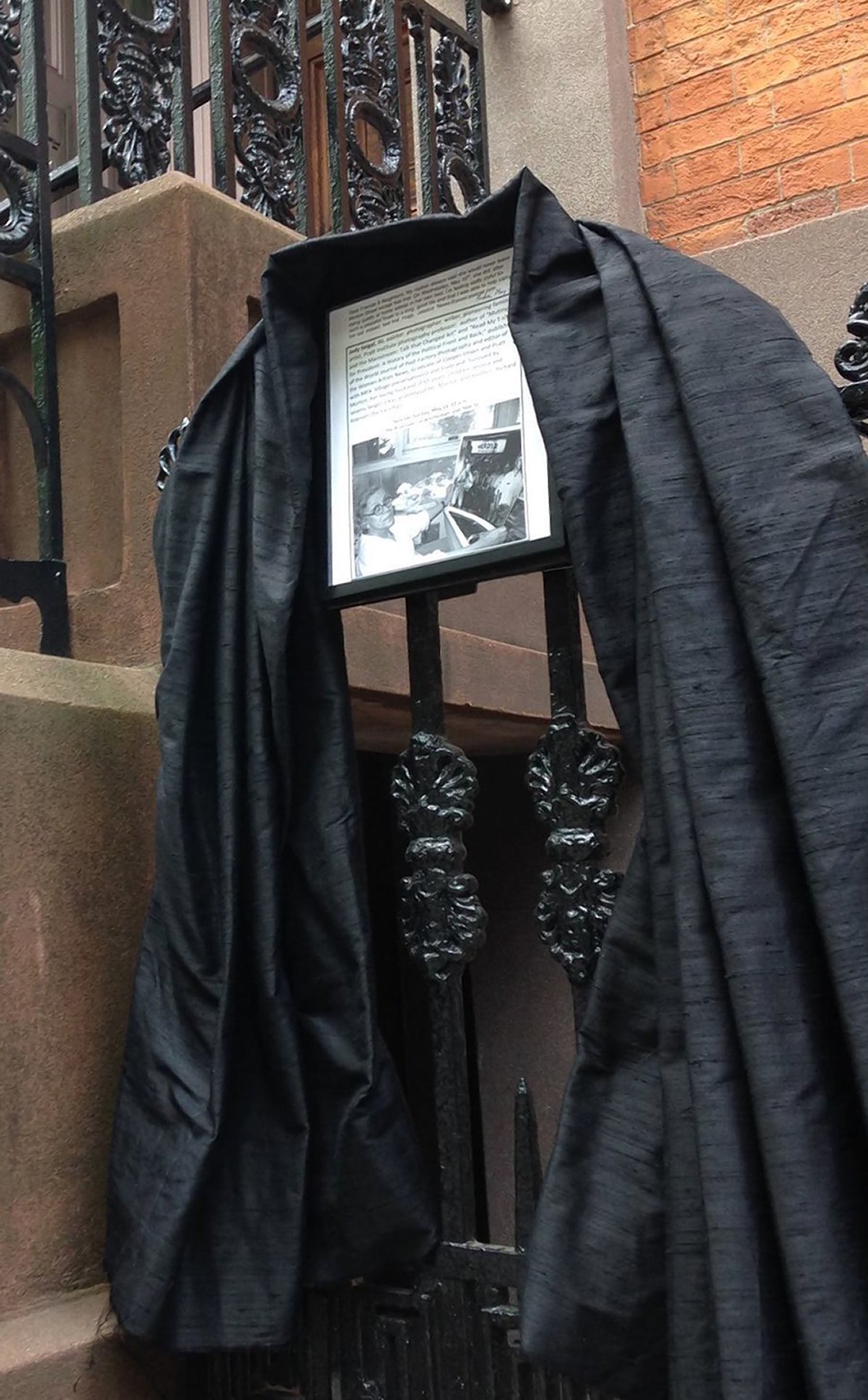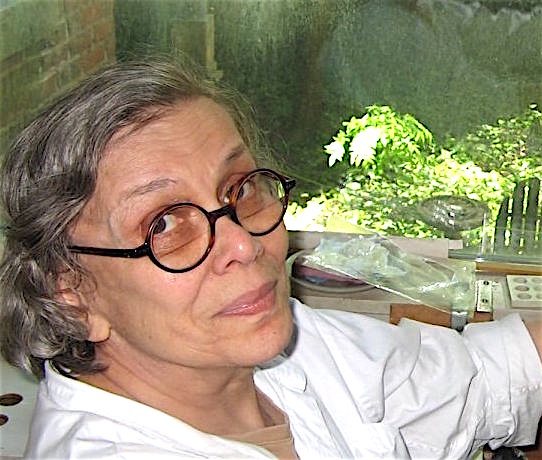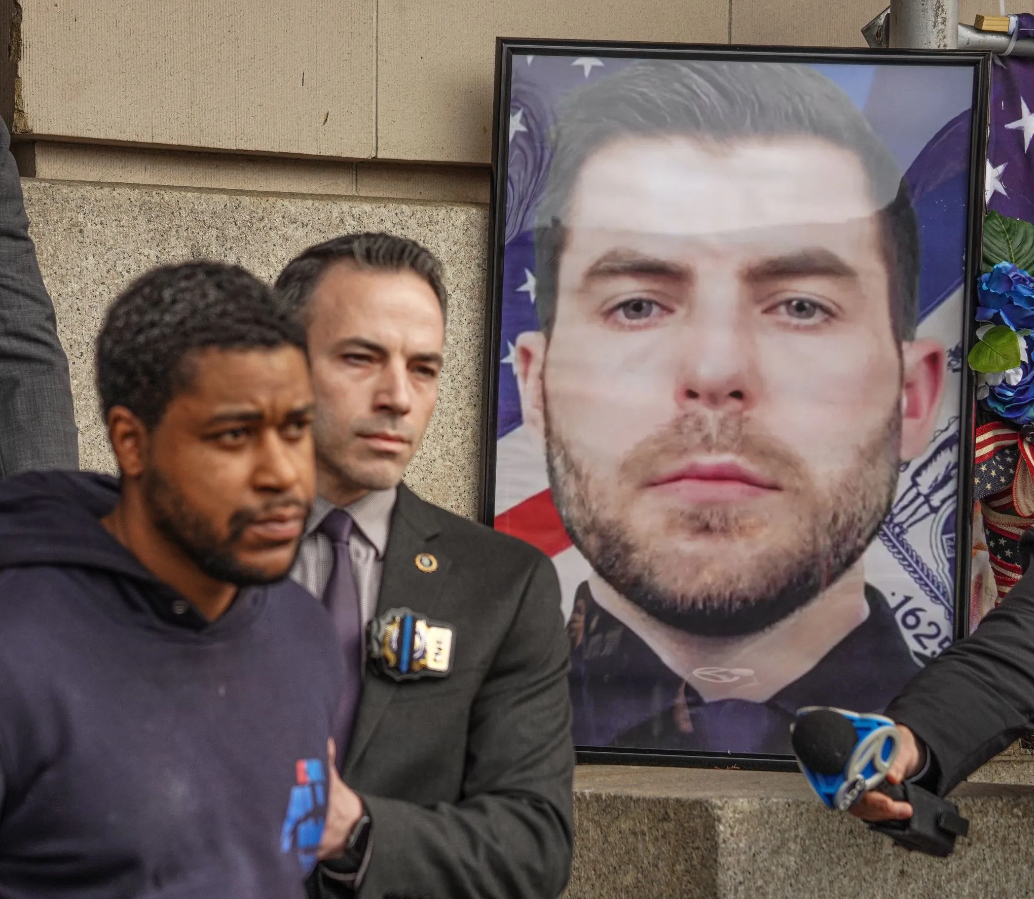
BY ALBERT AMATEAU | Judy Seigel, artist, photographer and passionate advocate for the preservation of Greenwich Village, died Wed., May 10, in the Morton St. brownstone where she and her husband raised their family and made their home for 60 years. She was 86.
Although she lost her short-term memory because of Alzheimer’s, diagnosed seven years ago, Judy remained lucid and recognized her family until the end when she died in her sleep, said her daughter, Jessica Seigel.
“My mother often said she would never leave our Morton St. house except feet first,” Jessica said. “On Wednesday she did, after dying at home asleep in her own bed. I’m feeling sadly joyful for such a finale to a long good life and that I was able to help carry her out, indeed, feet first.”
In recent years, Judy’s relentless neighborhood advocacy and artistic endeavors were chronicled in The Villager.
In a 2007 article by Kristin Edwards in the newspaper, Judy told about how she came to publish, with her own text and photos, “Read My T-shirt for President: a True History of the Political Front and Back.” Intrigued by what she called “street literature,” Judy began photographing people in T-shirts with different texts, concentrating on political messages, after taking part in the 2004 protests at the Republican National Convention.

Judy’s letters to the editor of The Villager included issues about waterfront preservation. She also wrote to counter the claim that selling art on the streets was a constitutional matter, calling it “schlock as free speech” and “the right to clog streets.”
She was passionate about the problem of homeowners, like herself, with tenants who pay low, regulated rents while the homeowners have to pay property taxes based on what market-rate rents would fetch. Judy explored that issue in testimony she wrote that was delivered by her daughter at a 2013 Rent Guidelines Board hearing. Judy often said, “We don’t own the brownstone, it owns us,” her daughter recalled.
Over the years, Judy Seigel rallied to support many political and preservation causes. In the early 1960s, she marched, pushing her daughter in a pram, in a demonstration against Robert Moses’ plan to run street traffic through Washington Square Park. In the late 1970s, she joined women’s movement protests and attended the 1977 National Women’s Conference in Houston. She also wrote, designed and edited Women Artists News. In the 1980s, Judy joined the movement that forced the city and state to abandon the $2 billion Westway project.
Trained as a painter at The Cooper Union, Judy branched out into photography and earned a master’s of fine arts from Pratt Institute. At age 50 she became an expert in alternative chemical processes for developing color photographs, and taught the subject for 14 years at Pratt.
In the 1980s, Judy began photographing the pimps and hustlers around the pre-Disney Times Square.
“I asked my mother if she was ever afraid and she said, ‘No. Nobody ever feels threatened by a middle-aged lady,’” her daughter said. Judy sold one of the prints she made during that time to the Museum of Modern Art.
Cynthia Larson, a photography professor now living in Boston, recalled meeting and becoming friends with Judy in 1980 at Pratt.
“I was 26 years old, right out of Iowa,” Larson said. “I was wide-eyed and very shy. Judy would shake me and say, ‘You can’t be shy and be a photographer in New York. Get involved.”
Born on July 20, 1930, in Manhattan to Hortense and Gershon Aronson, Judith moved with her parents and two brothers to Scarsdale. After graduating from high school there, Judith went to Northwestern University. On a blind date, she met Morton Seigel in 1947.
“So began the great love affair that led to 65 years of independent-minded marriage,” said their daughter Jessica, a writer and journalism professor at New York University.
Back in New York, Mort and Judy lived first on E. 11th St. off Avenue C, then moved to Riverside Drive while Mort worked as a buyer for Bloomingdale’s. After graduating from The Cooper Union, Judy worked as an illustrator in an ad agency.
In 1957, they bought the Morton St. house, dilapidated and roach-ridden, with eccentric tenants in residence. Nevertheless, they soon decided to leave for Switzerland where Mort, at the age of 30, would pursue a medical degree. They left the Morton St. house in the hands of Judy’s older brother, Richard Aronson. To support the family — their children were born in Switzerland — Judy did freelance illustrations and Richard sent them rent from the house. Dr. Seigel and Judy returned to Morton St. in the mid-1960s with their two young children.
“Those must have been difficult years,” said Jessica, adding, “My father often said all good things in his life came from Judy.”
In addition to their daughter, survivors include Judy’s husband, Morton, and their son, Jeremy. A granddaughter, Marina, and Judy’s brother, Richard Aronson, also survive.
The funeral was Sun., May 14, at Riverside Memorial, at Amsterdam Ave. and W. 76th St.


















